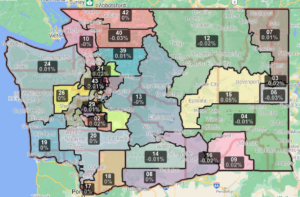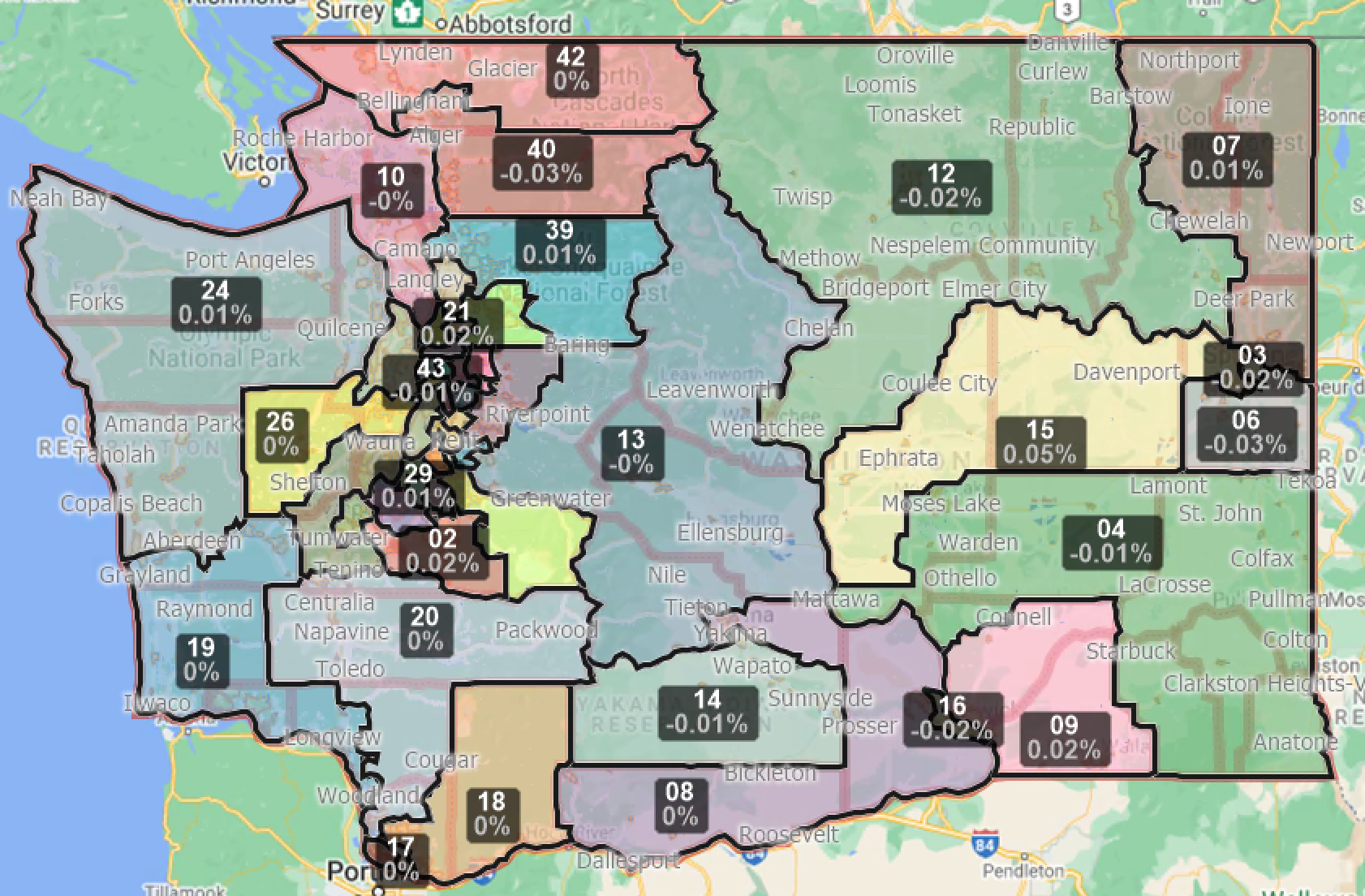Author: Andrew Hong
Redistricting Principle(s) Prioritized: Good Government
Date: Jan 16, 2022
Washington State has 49 state legislative districts that are redrawn every 10 years following the release of the decennial U.S. Census results. Washington’s state legislative districts are used to elect both state senators and representatives—both upper and lower chambers use the same state legislative district maps, where each district elects 1 senator and 2 representatives.
This plan follows all of the federal and state legal requirements of a state legislative redistricting plan (described in Part 1 below), but has an emphasized guiding principle on minimizing the splitting of political subdivisions. Political subdivisions are defined as any existing governmental geographic boundaries, such as municipalities, counties, hospital districts, school districts, and Native American Tribal Nations. This plan will specifically address minimizing the splitting of municipality and county political subdivisions.
Some challenges this guiding principle poses is that political subdivisions and communities of interest sometimes do not coincide. Therefore to value keeping city and county lines intact would mean some communities of interest may be split. Other challenges include not being able to create more electorally competitive districts or a fairer partisan-balanced map because of political subdivision constraints; and some city lines may not be compact which could affect compactness of districts when coinciding with city boundaries.
While these are unfortunate drawbacks to this plan, the benefit of valuing political subdivisions in redistricting is that communities’ state representatives and senators will have an easier time collaborating with other elected and non-elected government officials at all levels of government to serve their constituents. If districts are drawn so state legislative constituencies coincide with school, hospital, fire, water, city, and county boundaries, it’s easier for elected officials to collectively work together throughout because their jurisdictions match up to serve the same communities.

